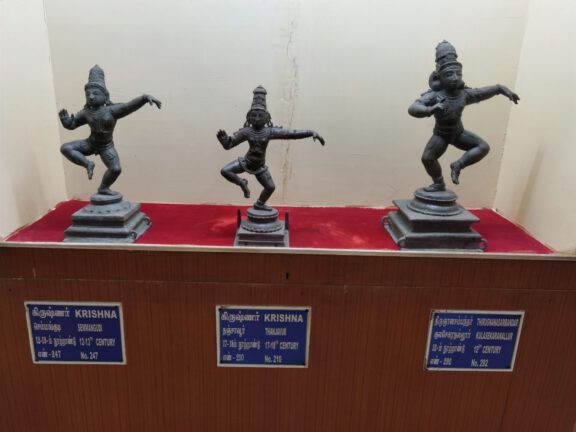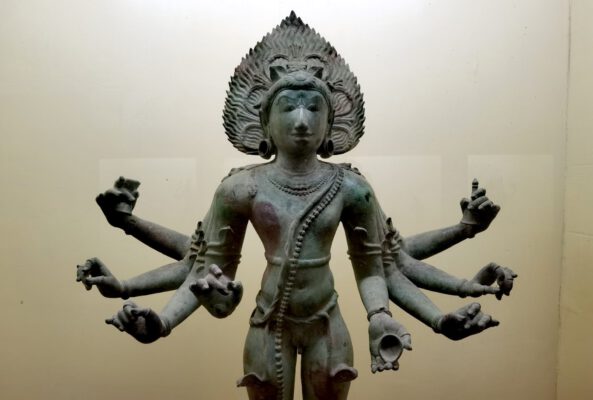Mimesis - Rasa - Representation - Expression - Thinking
Classical Antiquity
I have been trying for decades to avoid the pitfalls of ther to perceive and avoid Western art theory. I then spent many years in the realms of media theory, thinking about all possible forms of representation, about the character of information and the possibilities of interaction. It took me a long time to approach the sublime, until I finally arrived in India.
In classical antiquity, there are two important terms that can be applied to art: Mimesis and aisthesis. Mimesis is the principle of imitation. Plato said that when we imitate something that is already a lie, because the Shadow on the wall of the cave are mere appearances, so imitation is merely a lie of lies, and therefore dangerous. Aristotle was more 'modern' in this respect, for him mimesis is the living through of dramas, a catharsis is possible in the excitement and the experience of the resolution of conflicts, we can learn, even heal and grow in this way.
The second term, aisthesis, deals a little more deeply with perception itself. How do our senses perceive? What do our senses like? What feelings do they evoke? When is something sublime? This is about the structure of our perception, so it is more theoretical.
Both concepts, mimesis and aisthesis, usually lead to theories of representation: what is represented and how do we perceive it? It is usually based on a subject-object relationship in which the subject tries to understand the world as a counterpart, something that is outside of my self and can be understood through perception and mimesis. Language as a medium is helpful in this process, as are other forms of artistic media.
My basic problem was therefore that of representation, i.e. the representation of the world for the subject, expressed by a (different) subject. From the Renaissance onwards, the subject became more important, the expression of the self, i.e. art as self-expression, determined the modern concept of art. Art testified to the representation of an artistic 'genius' who emphasized his individual point of view. It is a somewhat more complex form of representation, but essentially the question of the art viewer has remained the same: What does the work represent?
The 5th Veda
14-15. He then thought: "I shall make a fifth Veda on the Nāṭya with the Semi-historical Tales (itihāsa), which will conduce to duty (dharma), wealth (artha) as well as fame, will contain good counsel and collection [of traditional maxims], will give guidance to people of the future as well, in all their actions, will be enriched by the teaching of all authoritative works (śāstra) and will give a review of all arts and crafts." https://www.wisdomlib.org/hinduism/book/the-natyashastra/d/doc202329.html#note-e-79660
In the period of a few centuries before and after the Common Era, central texts of Indian culture, the āgama (the book that describes the rule of temples in Tamil Nadu), Vāstu śāstra (principles of architecture) were written, the Kāma-sūtra (which describes the art of good living), Chitrasūtra (theory of painting and sculpture) and the Nāṭya śāstra (stage art), Viswakarma vastusästram (town planning), which describes the basis of art as a theory of rasa and many others.... An exact dating of all texts has not yet been possible.
Finding your way through this tangle is even more complicated than orienting yourself in classical antiquity. I am only referring to the broad outlines, not the technical discussions. All these texts refer to the tradition of the Vedas, and thus to the Hindu doctrine that the texts of the Vedas are divine.
The core idea is that Brahma, the creator of the universe, created it in order to experience himself. The self in the form of Atman and as the conscious self in the form of Purusha is part of Brahma, everything is Brahma, Brahma is everything. The realization of Brahma in man through Purusha enables a connection of our self with Brahma. This connection is possible in meditation, among other things. Here, consciousness can experience itself and receive the truth of Brahma. This was achieved by the rishis who passed on the received truth in the Vedas. Buddhism later rejected the idea that this knowledge is divine.
Central to this system of knowledge is that all consciousness is vibration, which does not contradict modern science. The Vibration is resonance, resonance, MixturesIn its purest form, this vibration is the syllable OM. Everything relates to this experience.
Of course, there are also discussions here about dualism (Dvaita) and monism (Advaita). But Advaita is the classical teaching. For me, it makes the most sense to compare Advaita with the concept of Immanence equate.
So when I try to immerse myself in the world of art theory from the time of the Vedas, the concepts of advaita (monism/immanence) and vibration (consciousness) are central for me. Rasa (taste, essence, mood) is a vibration that arises from this structure of thought.
Like everything in the ancient scriptures of the world of the Vedas, the whole thing is hyper-complex. The aesthetics are generally highly codified, everything has a meaning, every movement (32 Aṅgahāras), every hand position (24 mudras), every posture (108 Karaṇas), color, proportion, relation etc.... All of this has precisely defined meanings. It is the language of the gods, the laws are divine, there is little room for interpretation. What is visible in a work of art is a realization of these principles. Only when these are executed in the highest striving for perfection, with devotion and humility, only then do they have rasa - essence, taste, mood. For the gods wanted an object of distraction that would be audible and visible to all, and they asked Brahmā to create a Veda that would belong to all color groups. Brahmā created Nāṭyaveda by combining elements from the four existing Vedas. After its creation, Brahmā asked Indra to have the Nāṭyaveda performed by the gods, but Indra said that only sages who knew the secret of the Vedas and had fulfilled their vows were capable of cultivating and practicing it.
So 'traditional' Indian art is not about depicting the world. Nor is it about an artist expressing himself. It is - in the pure doctrine - solely about the realization of the divine principle. The descriptions of this principle are absurdly precise for Western senses. If one believes that these are divine principles, the discussion ends here as to why exactly it has this complexity. Otherwise, the question arises as to why everything was recorded so meticulously 2000 to 4000 years ago and why this tradition has remained almost unbroken to this day.
The source of art
Viewed on the surface, the countless ways in which art is expressed today, i.e. in its media, techniques, cultural circles, forms of expression and discourses, are confusingly colorful. Art is art because it moves us to perceive the world differently. That is perhaps the lowest common denominator. But then it stops there, because the world views associated with different art forms are extremely different.
So the question is, what is it that moves us? In mimesis, it is a simulation that is either a pure lie or can become a productive simulation space. As part of a philosophical discourse, art can make us discover new things and learn about our own nature. As rasa, art claims to express divine truths and thus help us to evolve. It is not a testimony to an afterlife or a story of salvation, but a manifestation of what makes us human, that is, it is a manifestation of consciousness.
In a profane but rich sense, this means that the human mind can expand its consciousness, cultivate it, train it, sharpen it. This development of consciousness manifests itself in the individual, in a culture, in an epoch. It's a bit absurd that all the materialists and capitalists run to the opera to celebrate the subtlety that they deny so much in everyday business life.
In a spiritual sense, one would think that it is unlikely that my level of consciousness represents the pinnacle of cosmic evolution. It would therefore be conceivable that consciousness is greater than what we generally associate with our brain on a neuronal level.






